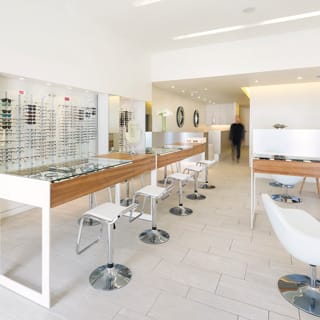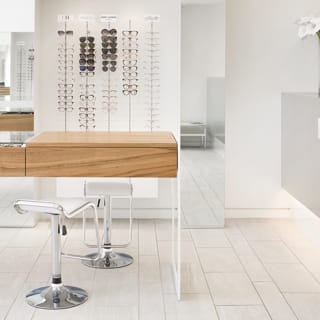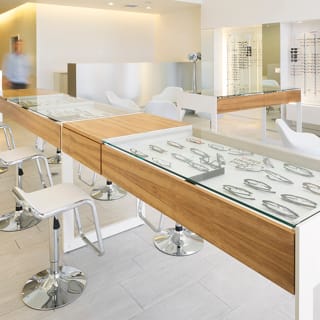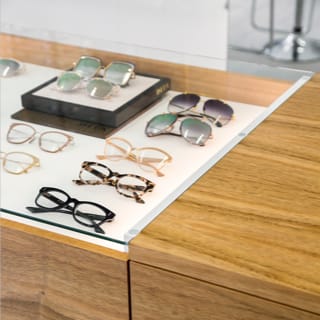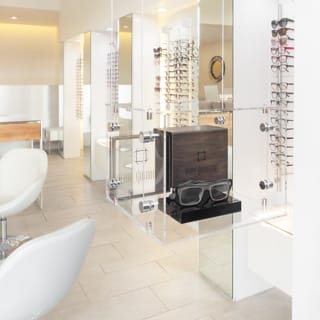Pink eye (conjunctivitis) is a common and contagious eye infection caused by viruses, bacteria, allergens, or irritants. If it is viral or bacterial, it can easily spread through direct contact with infected fluids, or by touching contaminated surfaces.
Depending on the type and environment, the virus or bacteria can survive anywhere from hours to several days, so everyday objects like doorknobs, phones, and makeup brushes can be potential sources of infection.
Pink eye is especially concerning in places like daycares and schools, where shared toys, desks, and supplies make it easy for pink eye to spread quickly among children.
What Causes Pink Eye?
Pink eye occurs when the conjunctiva—the thin, transparent layer covering the white of the eye—becomes inflamed, leading to redness and irritation. The most common causes include:
- Viral Infections: Often linked to the common cold or flu, viral pink eye spreads easily through coughs, sneezes, and contaminated surfaces. It can cause symptoms like red, watery, or burning eyes, while mild (usually clear) discharge is accompanied by other cold symptoms.
- Bacterial Infections: Caused by bacteria like Staphylococcus or Streptococcus, bacterial pink eye can produce thicker (sometimes yellowish-green) discharge and more intense symptoms, including crusty and swollen eyelids that can “glue shut” overnight.
- Allergies: Allergic conjunctivitis is triggered by allergens like pollen, pet dander, or dust. While not contagious, it can cause similar symptoms to infectious pink eye, including redness, itching, and swelling.
- Irritants: Chemicals and chlorine from swimming pools can inflame the eyes, causing pink-eye-like symptoms, such as red, sore, and watery eyes. Symptoms typically improve once the irritant is removed.

How Long Do Pink Eye Germs Survive on Different Surfaces?
The lifespan of pink eye-causing germs depends on the type of pathogen (virus or bacteria), the surface they land on, and environmental conditions like temperature and humidity. In general, viruses tend to survive longer on surfaces than bacteria. In general, viruses can survive up to 2 weeks, while bacteria survive around 2 to 8 hours.
Porous materials like fabric and tissues absorb and trap bacteria and viruses, shortening their lifespan. In contrast, smooth, non-porous surfaces—such as plastic, glass, and metal—allow germs to survive longer, making frequent hand-washing and surface disinfection essential for reducing the spread of pink eye.
How to Prevent the Spread of Pink Eye
Pink eye spreads easily through direct contact and contaminated surfaces, and that contact can be pretty simple. You can catch pink eye by performing everyday activities, such as touching a doorknob, sharing a towel, or even sleeping in the same bed as someone with pink eye.
Practicing good hygiene is key to reducing transmission. Follow these simple steps to help protect yourself and others:
Wash Your Hands Often
Wash your hands with soap and water for at least 20 seconds—especially after touching your face, handling contact lenses, or using shared surfaces. If soap and water are not available, use a hand sanitizer with at least 60% alcohol.
Avoid Touching Your Eyes
Touching your eyes with unwashed hands can introduce bacteria and viruses. If you need to touch your eyes, use a clean tissue or wash your hands first.
Disinfect High-Touch Surfaces
Germs can linger on frequently touched objects like light switches, doorknobs, phones, and keyboards. Use disinfecting wipes or sprays to clean these surfaces regularly.
Change & Wash Linens Often
Pillowcases, towels, and washcloths can harbor bacteria and viruses. Wash them frequently in hot water with detergent and avoid sharing towels with others.
Replace Eye Makeup & Contact Lenses
If you have had pink eye, throw away any eye makeup, mascara, or contact lenses you used during the infection to avoid reinfection.
Don’t Share Personal Eye Care Items
Avoid sharing items like makeup brushes, washcloths, and eye drops. Even briefly using someone else’s products can spread germs.
How Long Is Pink Eye Contagious?
Pink eye is most contagious in the early stages, typically starting a day before symptoms appear and continuing as long as symptoms persist. This period usually lasts from a few days to up to 2 weeks, depending on the cause.
When to See an Optometrist for Pink Eye
Most cases of pink eye resolve on their own within a few days to a week. However, you should see your eye doctor if:
- Symptoms worsen or persist beyond 7–10 days.
- You experience severe pain, swelling, or vision changes.
- There is thick yellow or green discharge from the eye.
- You have a weakened immune system or an underlying eye condition.
Your optometrist can determine the cause of your pink eye and recommend appropriate treatments, such as antibiotic eye drops for bacterial infections or antihistamines for allergic conjunctivitis.
Protect Your Eyes & Prevent the Spread
If you think you might have pink eye, do not hesitate to visit Eye Love Optometry for a professional diagnosis and tailored treatment options. With the right precautions, you can keep your eyes healthy and help prevent the spread of pink eye to others.
If you have any questions or want to schedule an appointment, we’re here to help—contact us today!









